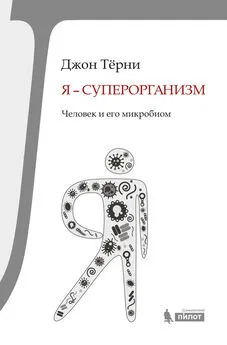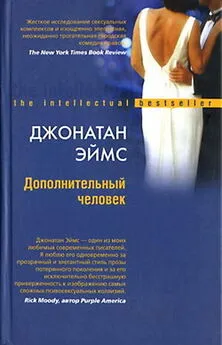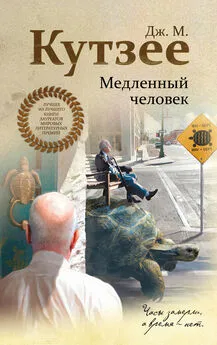Джон Тёрни - Я – суперорганизм! Человек и его микробиом
- Название:Я – суперорганизм! Человек и его микробиом
- Автор:
- Жанр:
- Издательство:ЛитагентБИНОМ. Лаборатория знанийa493f192-47a0-11e3-b656-0025905a06ea
- Год:2016
- Город:Москва
- ISBN:978-5-00101-416-4
- Рейтинг:
- Избранное:Добавить в избранное
-
Отзывы:
-
Ваша оценка:
Джон Тёрни - Я – суперорганизм! Человек и его микробиом краткое содержание
В каждом из нас живет множество бактерий и вирусов-во рту, на коже, в кишечнике. Они помогают переваривать пищу и усваивать лекарства, влияют на нашу гормональную и иммунную системы и более того – даже на мозг! Все это сообщество микроорганизмов ученые назвали микробиомом.
Джон Тёрни рассказывает о самых последних исследованиях микробиома, о его возникновении, росте и роли в развитии самых разных болезней (аллергии, диабета, желудочно-кишечных расстройств, рака и шизофрении). Прочтя эту книгу, вы, несомненно, по-новому ощутите свой организм, свое тело; по-новому посмотрите на себя как на личность.
В формате pdf A4 сохранен издательский дизайн.
Я – суперорганизм! Человек и его микробиом - читать онлайн бесплатно ознакомительный отрывок
Интервал:
Закладка:
Благодарности
Многие люди помогали мне уже тем, что упоминали какие-то интересные вещи, которые можно почитать, посмотреть или послушать. Всем спасибо. Еще более глубокая признательность тем, кто читал черновики этой книги, целиком или частично, и давал попутные комментарии. Это помогало мне делать текст более связным или читаемым (в идеале – одновременно усиливать оба параметра). Если я где-то все-таки бью мимо цели, в этом не их вина.
Спасибо вам за читательские отклики, Маргарет Бушелл, Корра Бушелл, Ник Лейн, Николас Уоллер, Джек Стилгоу, Питер Уошер, Питер Д. Смит, Таня Хершман, Лиз Калахер, Энди Экстенс, Кендра Браун, Тим Хейс, Дэвид Кэмерон (нет, не тот), Маргарет Макфол-Нгаи, Фелисити Меллор (перечислено без особой системы). За то же самое спасибо целой банде Тёрни, у которых меньше шансов в ближайшее время стать добычей тленья, чем у меня. Элеанор, Кэтрин, Даниэла, Майк, Дэвид, спасибо вам всем.
Группа в Icon, превратившая черновик в реальную книгу, также способствовала разнообразным улучшениям текста. Спасибо вам за это и многое другое, Дункан Хис, Роб Шерман, Эндрю Фарлоу и все-все-все.
Как обычно, спасибо моему агенту Луизе Гринберг и авторам незаменимого софта, помогавшего мне управляться с этим материалом; среди таких программ назовем здесь Scrivener, Evernote, Dropbox и активно использовавшуюся ближе к финальным стадиям работы систему поиска по всем «макинтошам» в нашем хозяйстве.
А поскольку в разделе «Благодарности» редко говорят спасибо помощникам, чье количество исчисляется триллионами, хочется выразить признательность всем моим незримым сотрудникам-микробам, которые дали возможность этому суперорганизму протянуть достаточно долго, чтобы написать очередную книгу.
И спасибо тебе, Даниэла, за все остальное.
Библиография
Aagaard, Kjersti, et al (2014). The Placenta Harbors a Unique Microbiome. Science Translational Medicine // 6: 237.
Abeles, Shiar and David Pride (2014). Molecular Bases and Role of Viruses in the Human Microbiome. Journal of Molecular Biology , 07.002.
Adler, Christina, et al (2012). Sequencing ancient calcified dental plaque shows changes in oral microbiota with dietary shifts of the Neolithic and Industrial Revolutions. Nature Genetics , 45: 450–455.
Alcock, Joe, et al (2014). Is eating behaviour manipulated by the gastrointestinal microbiota? Evolutionary pressures and mechanisms. Bioessays , 36: 201400071.
Allen, Stephen (2013). Lactobacilli and Bifidobacteria in the prevention of antibiotic-associated diarrhoea and Clostridium difficile diarrhoea in older patients (PLACIDE): a randomised, double-blind, placebo-controlled, multicentre trial. The Lancet , 382: 1249–1257.
Azad, M. (2014). Infant antibiotic exposure and the development of childhood overweight and central adiposity. International Journal of Obesity , doi: 10.1038/ijo. 2014.119.
Azad, Meghan, et al (2013). Gut microbiota of healthy Canadian infants: profiles by mode of delivery and infant diet at 4 months. Canadian Medical Association Journal , 185: 385–394.
Bach, J. (2002). The effect of infections on susceptibility to autoimmune and allergic diseases. New England Journal of Medicine , 347: 911–20.
Bain, Robert, et al (2014). Global assessment of exposure to faecal contamination through drinking water based on a systematic review. Tropical Medicine and International Health . 19: 917–927.
Bakalar, Nicholas (2003). Where the Germs Are: A Scientific Safari . John Wiley.
Barr, Jeremy, et al (2013). Bacteriophage adhering to mucus provide a non-host-derived immunity. Proceedings of the National Academy of Sciences . 110: 10771–10776.
Belkaid, Yasmine, and Timothy Ward (2014). Role of the Microbiota in Immunity and Inflammation. Cell , 157: 121–141.
Bercik, P., et al (2011). The intestinal microbiota affect central levels of brain-derived neurotropic factor and behavior in mice. Gastroenterology , 141:599–609.
Bested, Alison, et al (2013). Intestinal microbiota, probiotics and mental health: from Metchnikoff to modern advances. Part 1 – autointoxication revisited. Gut Pathogens , 5: 5.
Bianconi, Eva, et al (2013). An estimation of the number of cells in the human body. Annals of Human Biology , 40: 463–471.
Bjarnadottir, T. K. et al (2006). Comprehensive repertoire and phylogenetic analysis of the G protein-coupled receptors in human and mouse. Genomics , 88: 263–73.
Blaser, Martin (2014). Missing Microbes: How Killing Bacteria Creates Modern Plagues . Oneworld.
Bollinger, R. R., et al (2007). Biofilms in the large bowel suggest an apparent function of the human vermiform appendix. Journal of Theoretical Biology . 249: 826–831.
Borre, Yuliya, et al (2014). Microbiota and neurodevelopmental windows: implications for brain disorders. Trends in Molecular Medicine , XX, 1–10.
Bosch, Thomas (2012). What Hydra has to say about the role and origin of symbiotic interactions. Biological Bulletin , 223: 78–84.
Bosch, Thomas (2013). Cnidarian – Microbe Interactions and the Origin of Innate Immunity in Metazoans. Annual Review of Microbiology , 67: 499–518.
Brandl, K., et al (2008). Vancomycin-resistant enterococci exploit antibiotic-induced immune deficits. Nature , 455: 804–7.
Brodie, Eoin, et al (2007). Urban aerosols harbor diverse and dynamic bacterial populations. Proceedings of the National Academy of Sciences , 104:299–304.
Callewaert, Chris, et al (2014). Deodorants and antiperspirants affect the axillary bacterial community. Archives of Dermatological Research , 1007/s00403–014–1487–1.
Can, Ismail, et al (2014). Distinctive thanatomicrobiome signatures found in the blood and internal organs of humans. Journal of Microbiological Methods , 106:1–7.
Cao, Xinyi, et al (2013). Characteristics of the gastrointestinal microbiome in children with autism spectrum disorder: a systematic review. Shanghai Archives of Psychiatry . 25: 342–353.
Ciorba, Matthew (2012). A Gastroenterologists’s Guide to Probiotics. Clinical Gastroenterology and Hepatology , 10:960–968.
Claesson, M., et al (2012). Gut microbiota composition correlates with diet and health in the elderly. Nature , 488: 178–84.
Clemente, Jose, et al (2012). The Impact of the Gut Microbiota on Human Health: An Integrative View. Cell , 148, March.
Collins, Stephen (2012). The interplay between the intestinal microbiota and the brain. Nature Reviews Microbiology . 10: 735–742.
Colson, P., et al (2010). Pepper mild mottle virus, a plant virus associated with specific immune responses, fever, abdominal pains, and pruritus in humans. PLoS One , 2010;5:e10041.
Colson, P., et al (2013). Evidence of the megavirome in humans. Journal of Clinical Virology , 57: 191–200.
Conrad, Peter (1999). A mirage of genes. Sociology of Health and Illness , 21, 228–241.
Courage, Katherine (2014). Why Is Dark Chocolate Good for You? Thank Your Microbiome. ScientificAmerican.com March 19.
Cox, Laura, and Martin Blaser (2013). Pathways in Microbe-Induced Obesity. Cell Metabolism , 17: 883–894.
Cressey, Dan (2014). Microbiome science threatened by contamination – Non-sterile sequencing returns rogue results in dilute microbiome samples. Nature News , 12 November. doi: 10.1038/Nature. 2014.16327.
Dalmasso, Marion, et al (2014). Exploiting gut bacteriophages for human health. Trends in Microbiology , 22: 399–405.
Daston, Lorraine, and Elizabeth Lunbeck, eds (2011). Histories of Scientific Observation . Chicago University Press.
David, Lawrence, et al (2014). Host lifestyle affects human microbiota on daily timescales. Genome Biology , 15/7/R89.
De Filippo, C., et al (2010). Impact of diet in shaping gut microbiota revealed by a comparative study in children from Europe and rural Africa. Proceedings of the National Academy of Sciences . 107: 14691–14696.
De Vrieze, Jop (2013). The Promise of Poop. Science , 341: 954–957.
Dennehy, John (2014). What Ecologists Can Tell Virologists. Annual Review of Microbiology , 68: 117–35.
Dickson, Robert, et al (2014). Towards an ecology of the lung: new conceptual models of pulmonary microbiology and pneumonia pathogenesis. The Lancet Respiratory Medicine , 2: 238–246.
Ding, Tao and Patrick Schloss (2014). Dynamics and associations of microbial community types across the human body. Nature , 509: 357–360.
Donahue, Dallas, et al (2011). The Microbiome and Butyrate Regulate Energy Metabolism and Autophagy in the Mammalian Colon. Cell Metabolism , 13: 517–5269.
Dong, Q., et al (2011). Diversity of bacteria at healthy human conjunctiva. Investigations in Ophthalmology and Vision Science , 52: 5408–13.
Donia, Mohamed, et al (2014). A Systematic Analysis of Biosynthetic Gene Clusters in the Human Microbiome Reveals a Common Family of Antibiotics. Cell , 158: 1402–1414.
Duerkop, Breck, et al (2012). A composite bacteriophage alters colonization by an intestinal commensal bacterium. Proceedings of the National Academy of Sciences , 109, 17621–17626.
Dunne, J., et al (2014). The intestinal microbiome in type 1 diabetes. Clinical & Experimental Immunology , 177: 30–37.
Dunn, Rob (2011). The Wild Life of Our Bodies – Predators, Parasites, and Partners That Shape Who We Are Today . HarperCollins.
Dutilh, Bas, et al (2014). A highly abundant bacteriophage discovered in the unknown sequences of human faecal metagenomes. Nature Communications , 5: 4498.
Eberl, G. (2010). A new view of immunity: homeostasis of the superorganism. Mucosal Immunology , 3: 450–460.
Eiseman, B., et al (1958). Fecal enema as an adjunct in the treatment of pseudomembranous colitis. Surgery , 44:854–859.
Erdman, S., and T. Poutahadis (2014). Probiotic ‘glow of health’: it’s more than skin deep. Beneficial Microbes , 5: 109–119.
Читать дальшеИнтервал:
Закладка:






